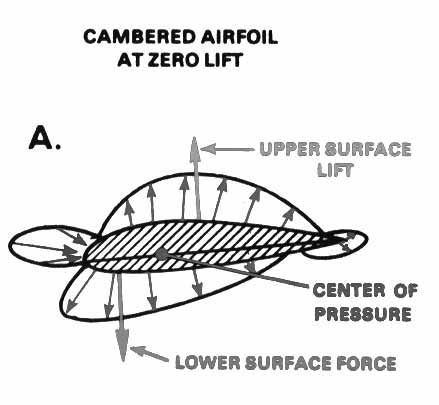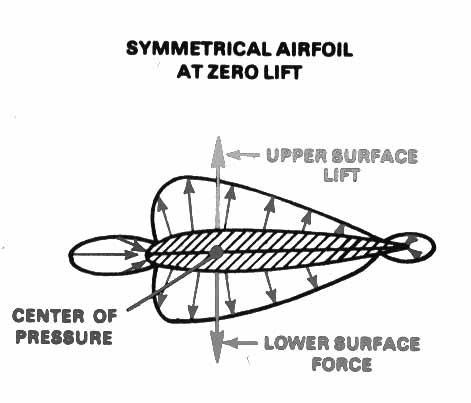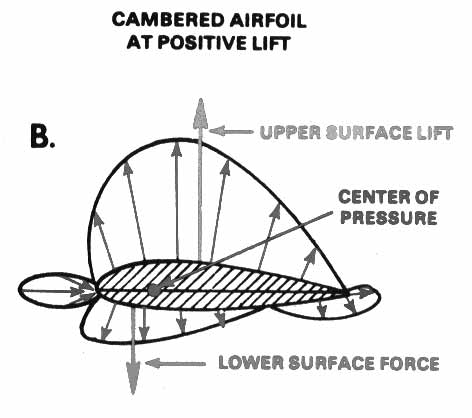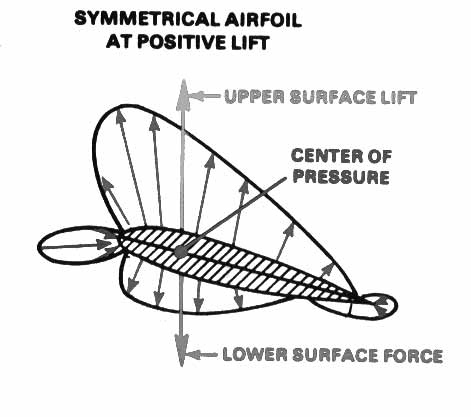
Figure: Pressure Pattern @ Cambered (nonsymmetrical) Blade @~copters
The upper surface
~ has pressures distributed which produce the upper surface lift
The lower surface
~ has pressures distributed which produce the lower surface force
Net lift produced by the blade
~ is the difference between lift on the upper surface and the force on the lower surface
~ is effectively concentrated at a point on the chord called the center of pressure

Figure: Pressure Pattern @ Lifted Cambered (nonsymmetrical) Blade @~copters
When >angle of attack is increased:
~ upper surface lift increases relative to the lower surface force
~ since the two vectors are not located at the same point along the chord line,
~ a twisting force is exerted about the center of pressure
~ center of pressure also moves along the chord line when angle of attack changes, because the two vectors are separated
~ this characteristic of nonsymmetrical blades results in undesirable control forces that must be compensated

Figure: Pressure Pattern @ Symmetrical Blade @~copters
Upper surface lift and lower surface lift vectors are opposite each other instead of being separated along the chord line as in the cambered blade.

Figure: Pressure Pattern @ Lifted Symmetrical Blade @~copters
When the >angle of attack is increased to develop positive lift
~ the vectors remain essentially opposite each other and
~ the twisting force is not exerted
~ center of pressure remains relatively constant
This is a desirable characteristic for a rotor blade, because it changes angle of attack constantly during each revolution.
catch ~>Helicopter ~>Xi ~>Formulas!



